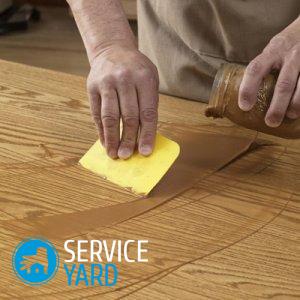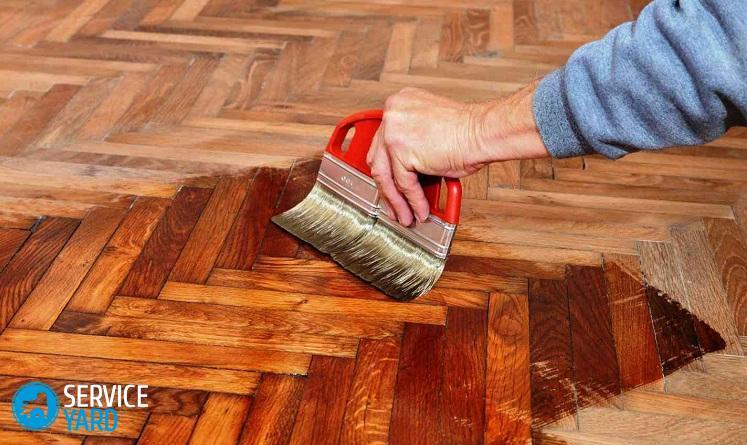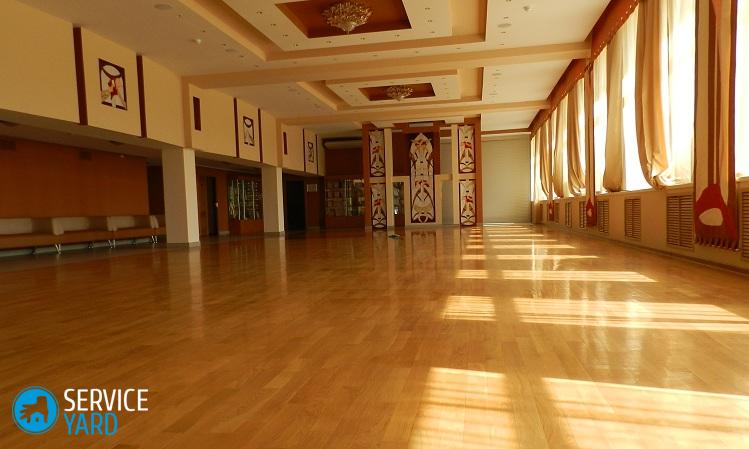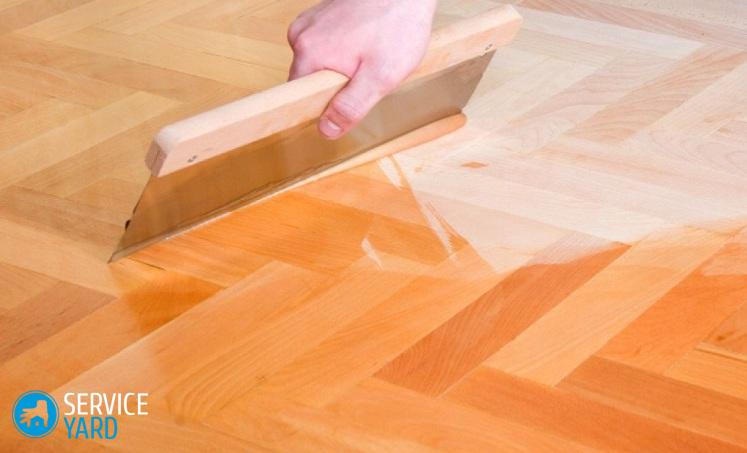Mastic for parquet

Parquet flooring used to be considered a luxury item, but nowadays it has become more accessible to a wide range of consumers, so it has not lost its popularity. In order for the coating to please its strength and beauty for a long time, and also to remain in perfect condition for many years, it is necessary to properly care for it. Mastic for parquet is the optimal solution to create a protective layer on the coating, as well as preserve all its properties. We will tell you what types of mastic are, its advantages and features of application in our article.
to contents ↑The purpose of the mastic
Unprocessed parquet, despite all the beauty of natural wood, does not look as impressive as we would like. To fix this, after mounting on glue, you need to complete the final step - this is the treatment of the coating with mastic, wax, varnish or oil. Mastic for a parquet board emphasizes all beauty of wood texture.
Important! On sale there are compounds with bactericidal properties that protect the coating from decay. Rubbing surfaces with mastic increases not only aesthetic characteristics, but also cares for the board, protecting them from cracking, high humidity and rapid wear.
Mastic for a wooden floor is a material created on the basis of natural components, which is responsible for the safety of the coating. The composition of this tool includes wax components and polymers.
Rubbing boards is necessary for:
- Creating a protective film on the surface of the floor covering.
- Gives parquet glossy shine.
- Protect the material from contamination, high humidity and premature wear.
This tool facilitates the maintenance of wood coatings.
In the production of rubbing, the following components are used:
- Rubber.
- Bitumen.
- Natural resins.
- Synthetic resins.
Mastic can have different elasticities and viscosities, depending on the components used in the production. Most often it has a consistency, like glue or varnish.
Benefits
When compared with varnishes, mastic for parquet board has the following advantages:
- Dries fast.
- A harmless product, as it contains natural ingredients that retain coverage.
- Easy to care.
- The ability to repair a specific area.
Varieties of mastics
To obtain the desired effect after the mastic for the parquet was used, it is necessary to choose the right composition. To do this, you need to know what types of rubbing are and the features of each of them. Both colorless mixtures and compositions are sold, and with different shades. Using color mixes, you can update the old flooring and give it the right shade.
Mixtures for the care of wood coatings are:
- Finished. Most often, these compounds are sold in sealed at both ends of the tubes. With these mixtures, you just need to grate the floor after installing the parquet on the glue.
- Soluble. Mastic data must be prepared before use. They are sold in the form of a dry mixture into which hot water is added and mixed.
Hot and cold formulations are available.
Hot mixes
Use them for typesetting parquet. They are made on the basis of rubber and bitumen. The main advantage is quick hardening. After laying the parquet on the adhesive and applying the mastic mixture on top, you can walk on the floor in a few minutes.
Important! Hot mastic for parquet boards is most often used in commercial institutions and specialists are involved in its application, because the laying technology is complicated.
The disadvantages are:
- The likelihood of fire and burns during application, because the composition is heated to 180 degrees.
- To warm the mixture, you need a special container and equipped place.
Cold mixes
Cold mastic for parquet is made on the basis of:
- Gasoline.
- White Spirit.
- Ethyl acetate.
The applied composition hardens gradually during the evaporation of the solvent. Hardening time is about two days. Three days after processing with cold mastics, the parquet can be looped and ground.
Such formulations may thicken, but they can be diluted with the solvent used in the preparation of the rub.
to contents ↑Important! Using a different solvent can ruin the solution and disrupt the appearance of the floor covering.
Classification by composition
Mastic materials are divided into:
- Water soluble.
- Water emulsion.
- Turpentine.
- Wax.
Let us consider in more detail each species.
Water soluble
These are formulations that must be diluted with water before application. Such a mastic is suitable for oak flooring, because this tree is practically not exposed to moisture.
To process other types of flooring, it is necessary to make the mixture thicker and with less water. The most sensitive species are trees such as beech or birch. They can not be processed with such mastic.
Important! To choose the right concentration of the composition, read the instructions and recommendations on the package.
Water emulsion
Suitable for any type of parquet floor.
Benefits:
- Easy to use.
- It dries quickly.
- A variety of structures - thick, liquid, pasty.
- Gives parquet freshness.
Turpentine
These ready-made mixtures are suitable for caring for parquet from such wood species that are not resistant to moisture - birch and beech.
Important! It is not recommended to use turpentine compositions when laying parquet on bitumen glue.
Wax
Most often, wax mastic for parquet is used to protect surfaces from delicate varieties of wood - beech, maple, juniper, birch. But in general, this material is suitable for other types of wood.
to contents ↑Important! The disadvantage of such compositions is the specific smell that remains in the room for some time after processing the coating. Basically, such compounds are sold in glass containers.
Most popular manufacturers:
- Amber.
- Autocrine aqua.
- Adler
- Oil wax Parquet Terrace.
- Vici Lux.
- Bagi.
Application technology
Mastic for the floor can be applied with your own hands. No special knowledge and skills are required to do this.
Important! Stir the solution thoroughly if using a dry mixture.
Apply material using a regular hard brush.
Phased work:
- Prepare the composition and process it with the floor covering in the room.
- Let it dry for a couple of hours, remove the mixture from the floor with a dry rag.
- Leave to dry completely.
- Apply a second coat.
to contents ↑Important! Reapply the water-based emulsion mixture after an hour with a soft cloth or brush, and turpentine - after the first layer has completely dried. The packaging indicates the exact drying time.
Stock footage
Mastic for flooring is prone to wear and tear, like any other material. To keep parquet in perfect condition, it needs to be regularly updated. With proper care, your coating will delight for many years.
- How to choose a vacuum cleaner taking into account the characteristics of the house and coatings?
- What to look for when choosing a water delivery
- How to quickly create comfort at home - tips for housewives
- How to choose the perfect TV - useful tips
- What to look for when choosing blinds
- What should be running shoes?
- What useful things can you buy in a hardware store
- Iphone 11 pro max review
- Than iPhone is better than Android smartphones






